I love climbing at Indian Creek. It’s a sport-crack paradise, a stunningly beautiful place to hone your jamming skills.
Although Indian Creek is technically located in the “desert,” it is not, however, true “desert climbing.” A true desert experience doesn’t mean waiting for your turn to run TR laps on Quarter of a Man. It doesn’t mean climbing halfway up a wall, clipping an anchor, and saying, “Take! Lower me.”
A true desert climbing experience means going off-the-beaten path in search of high-end obscura, historical heinosity, hidden gems, rarified summits, and sketchy adventures on crumbling rock with ancient pin belays and no one else in sight.

Indian Creek is a great spot for an apprenticeship, but if you want to call yourself a desert master, you gotta leave the Supercrack Buttress parking lot and start paying your dues by climbing desert towers.
Tower climbing is the ultimate dues-paying experience. You get solitude, adventure, and most distinctly, an actual summit. In order to reach that summit, you typically need a full bag of climbing tricks—including the ability to scratch up heinous bits of sandy aid and confidently free climb all crack sizes.
Climbing towers means you’re gonna suffer. You’re gonna go to battle. When you get to the top, you’ll feel like you’ve earned that summit.
Standing on top of an aesthetic, isolated tower is what makes desert climbing really unique. Slow down, chill, and just absorb the magnificence: the 360 views, the singularity, the silence, the summit beer.
There are hundreds of towers of all sizes and difficulties in the desert. The path to desert maestro status is straightforward and simple: get out there and start bagging towers! But don’t think you can just run a lap on Otto’s Route and call yourself a card-carrying desert climber. Paying your dues doesn’t come that easy.
After many years and many summits, I’ve put together a list of towers and routes that cater to a wide range of abilities and progression. Each of these towers offer variety, spice, adventure, and history. These summits represent worthy—and dare I say—mandatory ticks for any dedicated climber’s list.
Add your name to these summit registries, and you’ll have earned that irrevocable status of being a true desert climber.
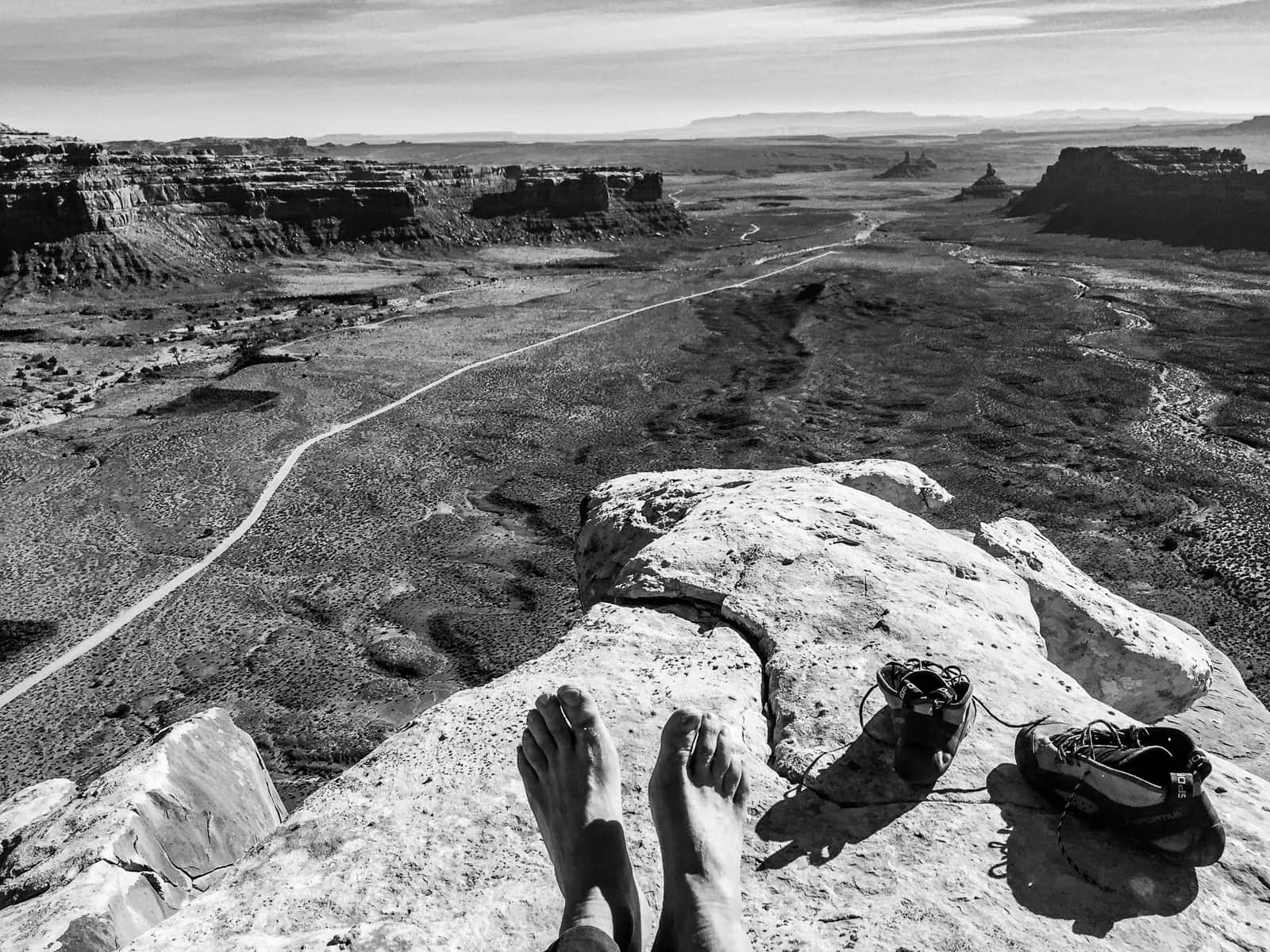
North Chimney (5.8), Castleton Tower
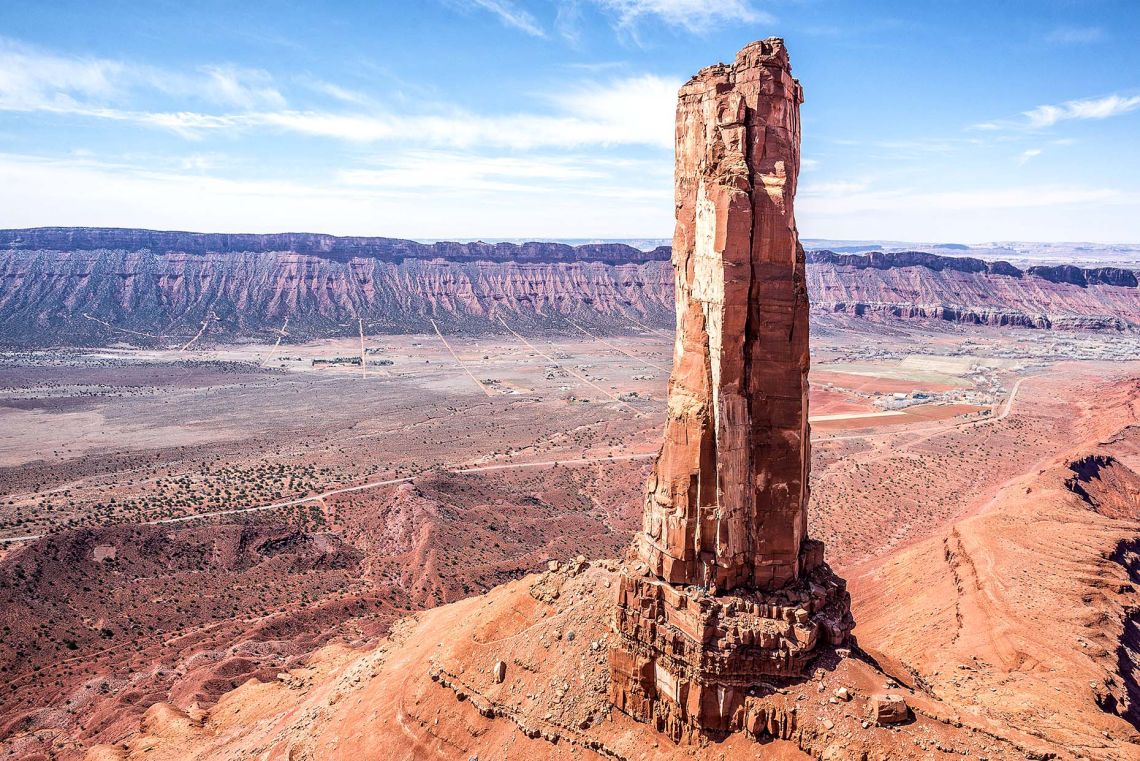
FA: Burgette and Erickson, 1970
Bah, seriously? A 5.8 route is on this list?
Yes, because Castleton is the perhaps the most iconic desert tower and the North Chimney offers the easiest, best way to the top. The North Chimney is far superior to the more famous and historic Kor-Ingalls, Castleton’s first route and one of North America’s 50 Classics, a designation that makes it a complete gong show most weekends of the year.
If you’re a complete tower neophyte, the North Chimney is the best way to begin your tower tick list. Grasshopper, start here.
But chimneys suck! you say. They do … but not this chimney. This chimney is a beautiful voyage with tasty wide crack jamming. Wriggle through a crux offwidth and enter a vertical shaft, its walls painted with trippy, hallucinogenic veins of calcite. A masterpiece.
This is far from the hardest tower in the desert—but like any good drug dealer, I give you the first taste free.
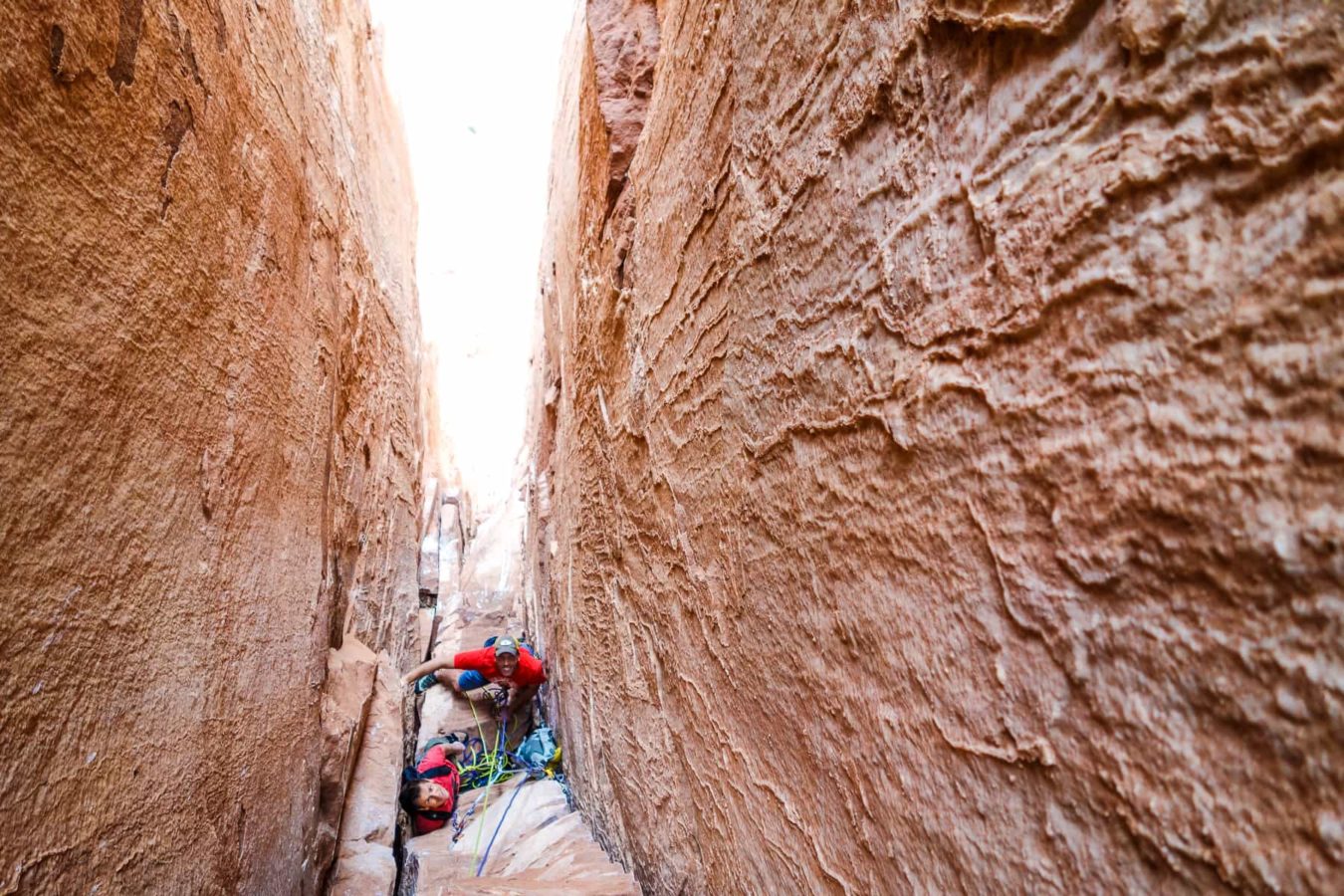
Sisyphus (5.11), Zeus
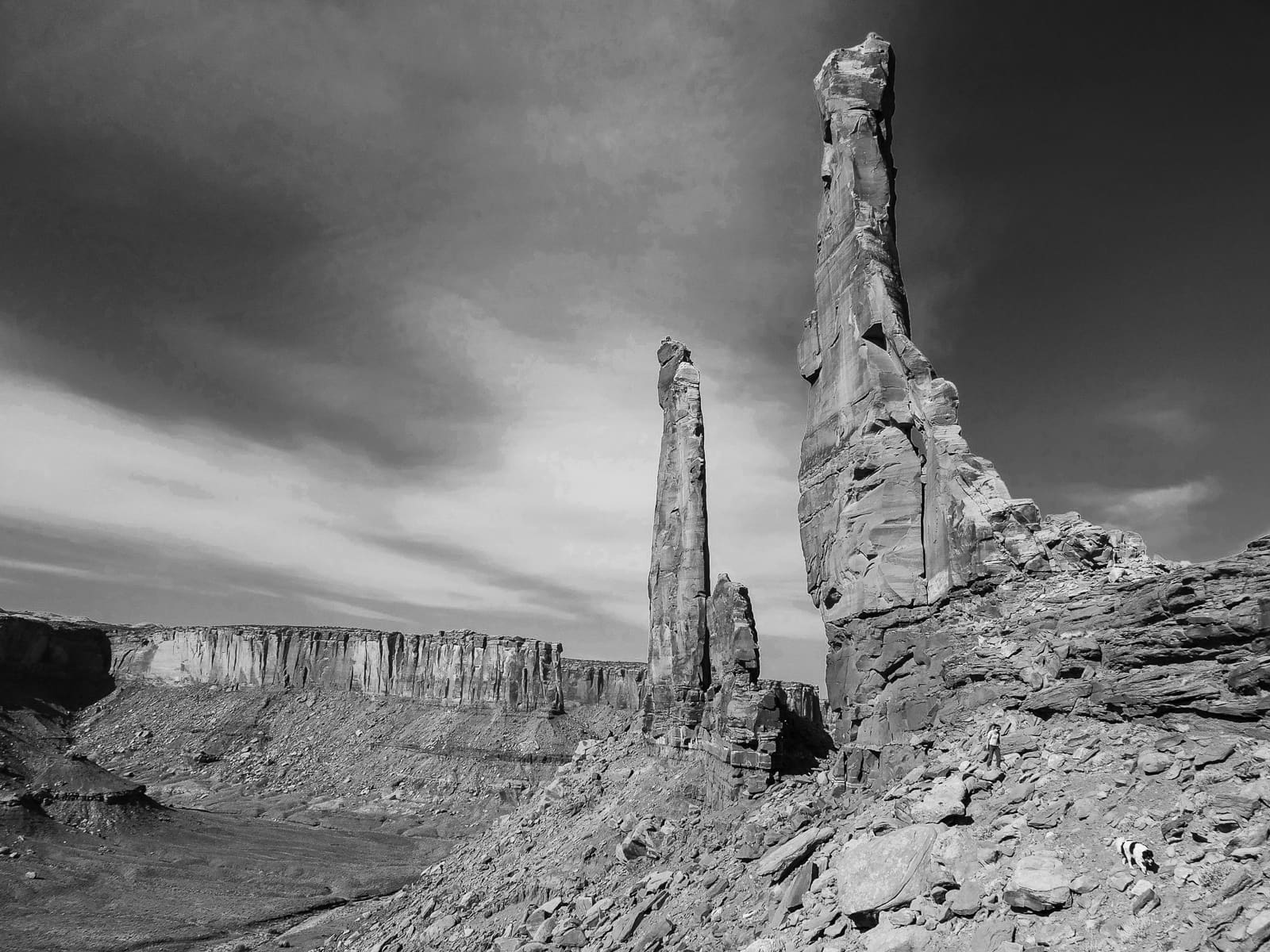
FA: Jimmy Dunn and Doug Snively; 1973. FFA-Jeff Achey and Chip Chace; 1981.
Moses gets the most of the traffic in Taylor Canyon—and for good reason. It’s one of the most beautiful towers in the world, and Primrose Dihedrals is a legendary line.
Zeus is Moses’ little brother next door. What Zeus lacks in stature it makes up for with Sisyphus, the best 5.11 tower route in the desert.
This route is fucking ALL TIME!
Sisyphus is a stunning and independent line—the only route to the summit—and it demands a slew of crack techniques over its three consecutive pitches of stout, serious 5.11.
Pitch 1 is a steep, technical challenge. Pitch 2 is a punchy tips corner to a body-eating offwidth. Pitch 3 is a heady treat that requires conviction and confidence.
The summit is mega: a small, rounded point in a sea of desert wilderness.
Regular Route (5.11c), Standing Rock
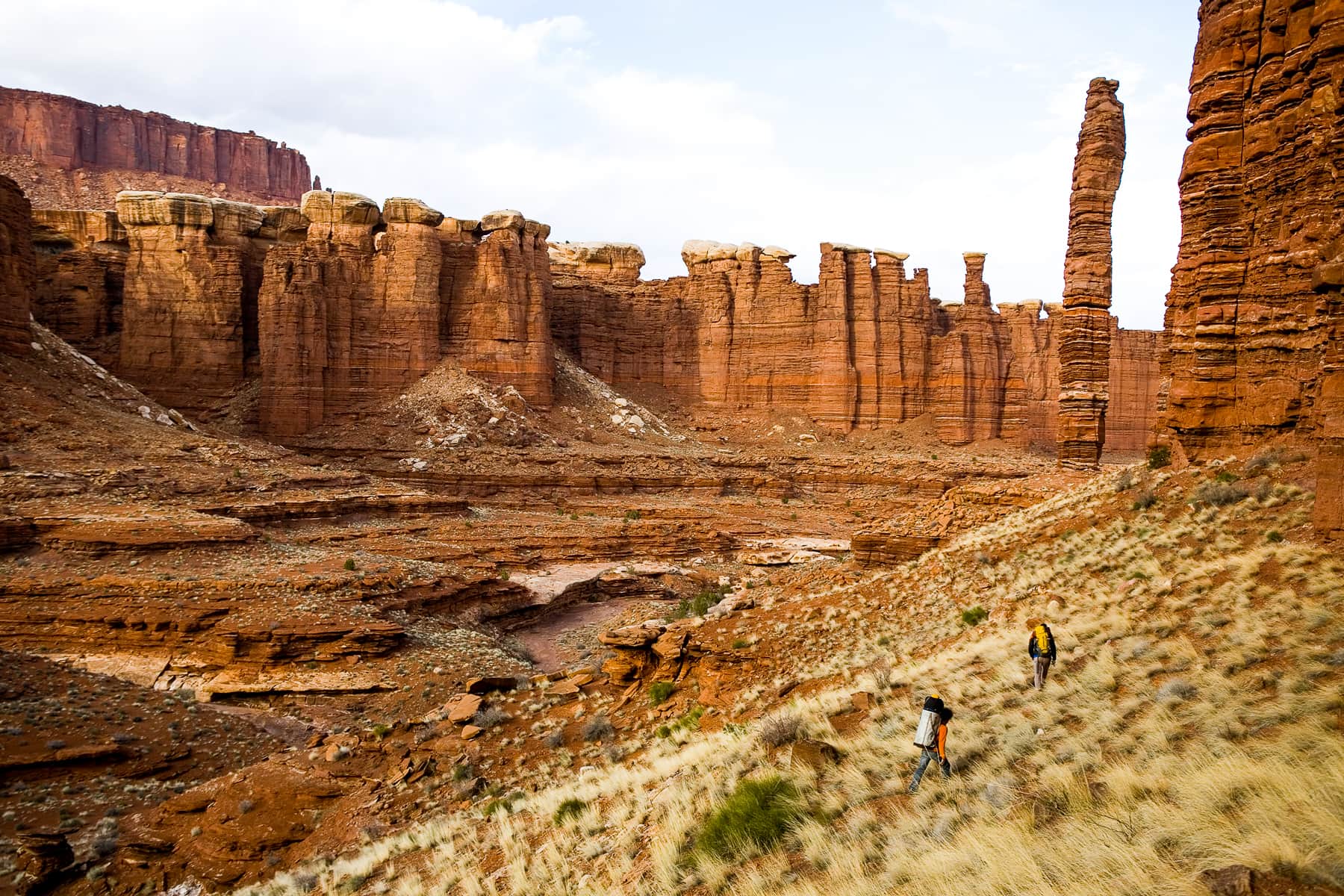
FA: Layton Kor and Huntley Ingalls, 1962. FFA: Keith Reynolds and Walt Shipley, 1993.
Nestled below the popular White Rim Trail in Canyonlands is “The Basin”, an otherworldly collection of crumbly spires and needles, with the two finest being Standing Rock and Shark’s Fin. Spend a weekend in The Basin climbing these two desert gems and you’ll be buzzing on the drive home with memories of adventure, solitude, and hard-earned summits … “hard-earned” because The Basin makes you suffer.
First up is Standing Rock, a perfect finger of imperfect rock standing in the most unlikely fashion. Layton Kor joked of his first ascent, “Not because it’s there, but because it might not be there much longer,” borrowing from George Mallory’s famous Everest quip.
Don’t let its Leaning Tower of Pisa tilt or layers of suspect stone spook you off. Standing Rock is solid and the climbing has cleaned up significantly over the decades since Kor scratched and banged his way to the cumbre in 1962, now providing not-as-bad-as-it-looks 5.11 free climbing.
Every pitch, however, calls upon a full collection of crack skills, so come prepared to get pumped, scared, and potentially flail and wail. The flexing flake at the crux has long since busted off, but you can still crimp your way through—or, thanks to a bolt, yard past. The view from the tiny summit is an otherworldly experience that makes you wonder if you are actually on Mars.
Fetish Arete (5.10+ R), Shark’s Fin

FA: Rob Slater, Jim Bodenhamer, Bruce Hunter, and Tom Cotter; 1992. FFA: Stevie Haston, Steve Bartlett, and Laurence Gouault, 1996.
Since you’re already down in the Basin, I recommend tagging on the Shark’s Fin, another improbable leaning tower. Although, at 5.10, Fetish Arete appears easier on paper than Standing Rock’s Regular Route, it requires a far cooler head as the protection is less-than-ideal in spots and the route-finding is tricky down low.
Climb this route and I guarantee you that, more than once, you’ll be filled with doubt as you navigate the choss, wondering why you aren’t cragging at Supercrack Buttress … but stay with it. By the end you’ll agree: the overall climbing experience is magnificent and the summit plank is a surreal place for a stroll.

Fisher Towers
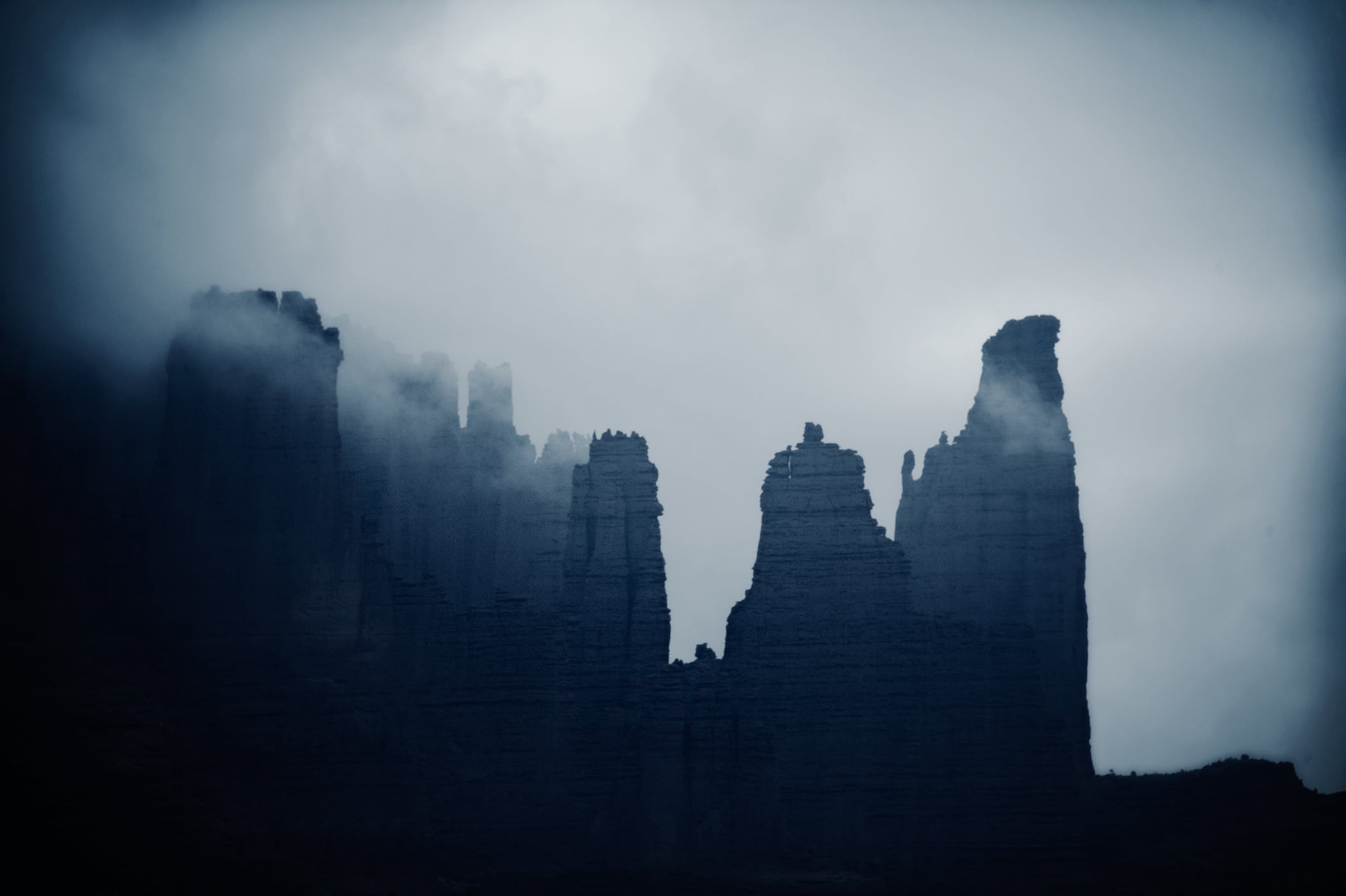
The Fisher Towers are only a couple miles from Castleton Tower, but they’re a world away in terms of rock quality and challenge. This formidable collection of mud-plastered spires are home to the mighty Titan, which, at 900 feet tall, is the tallest freestanding sandstone tower in the world.
Every climber should climb at least one Fisher Tower in his or her lifetime, but if you want dues-paying points and desert-climber street crew, don’t just make it weak-sauce Ancient Art, with its well-trodden novelty summit.
There are nearly a dozen summits in the Fishers, but your mission is getting to the top of the Big Four: Echo Tower, Cottontail Tower, King Fisher, and the granddaddy of them all, the mighty Titan. Pick your poison, but all of the normal trade routes on these big daddies are quality lines.
Once a true terror show of sketch, the Fishers have been somewhat tamed by traffic and new bolts. The trade routes no longer require nailing mud curtains and bent star-drives as these sections have been updated with C1 placements in solid stone and half-inch anchor bolts. Nevertheless, each of these towers provides an unforgettable aid-climbing adventure and a proud summit.
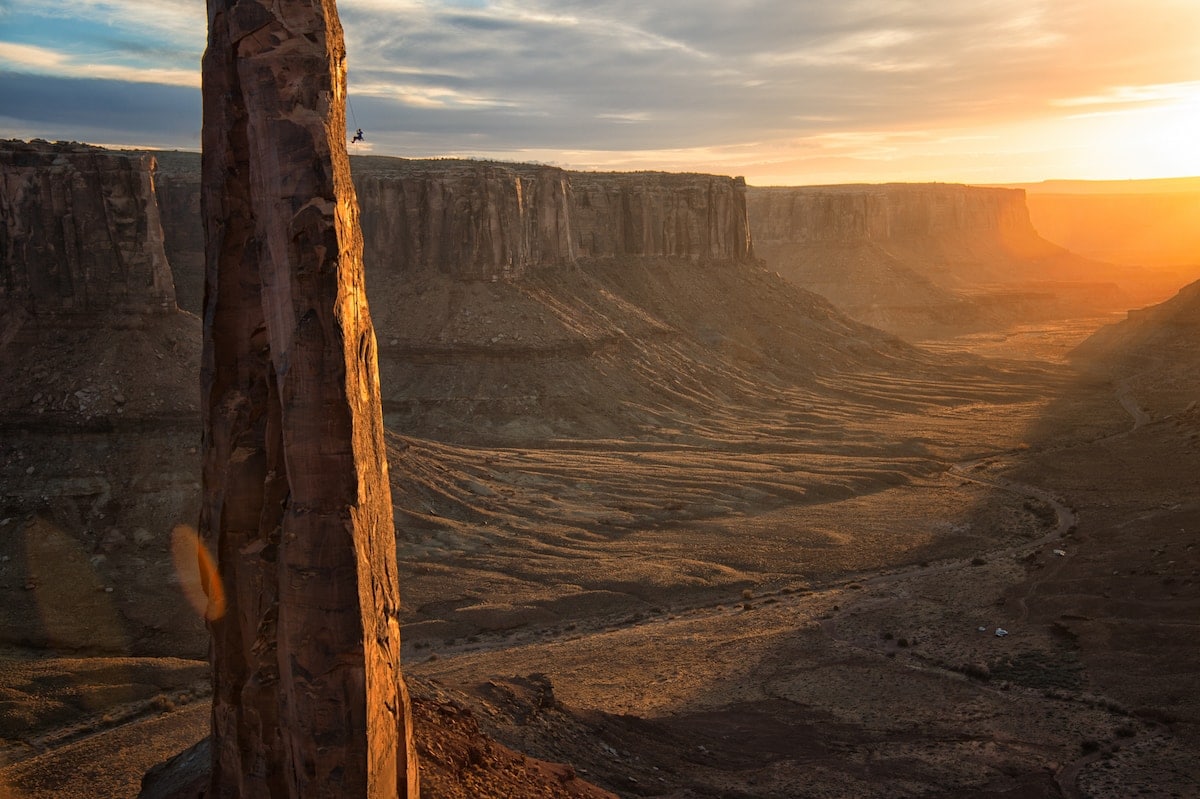
Gothic Nightmare, Mystery Towers
Does aid climbing in the Fishers feel a little too domesticated for you? Well, my friend, I have a place for you that is as wild and terrifying as anywhere you will ever climb. The Mystery Towers, which boast five summits that, as a collection, are the hardest-to-reach summits of any tower in the desert. Only the most demented, deranged, and committed climber would quest to summit all five of the Mysterys: Hydra, Atlas, Doric Column, Citadel, and Gothic Nightmare.
To be nice, I’ve selected only one for you to try: Gothic Nightmare. And trust me, one is more than enough.
Gothic Nightmare makes this list over the other summits because of … its summit. No matter which route you chose on the Nightmare—they range from gnarly mud-digging aid adventures to super gnarly mud-digging aid adventures—they all end on a final pitch of hoo-doo weaving and traversing that claws up the twisted wizard’s cap summit point. To actually stand on the true summit, a point no larger than a laptop, requires a level of balance and terror management that few will be able to muster.
Eagle Feather (5.10), Eagle Plume Tower, Valley Of The Gods
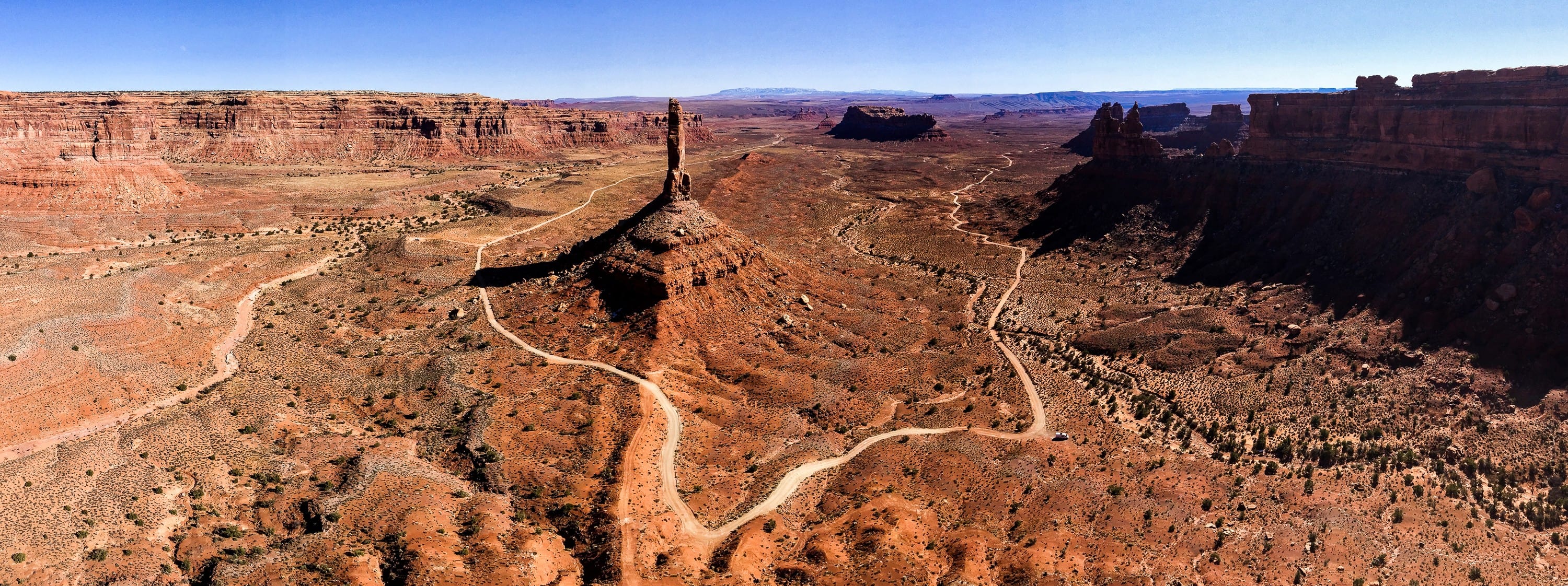
FA: Bill Forrest, Frank Luptom; 1976. FFA: Craig Kenyon, Jeff Cristol; 1989.
Tucked into the bottom corner of southeast Utah is the Valley Of The Gods (aka, the VOG), a string of towers that overall lack quality stone but make up for it tenfold with incredible setting and solitude.
The VOG is what the desert used to be like 20 years ago: lonely, quiet, and brimming with adventure. A gravel road winds its way through the valley, fortuitously bringing you recreationally close to most of the towers, thereby yielding short approaches. And yet, you’d have better odds of seeing Sasquatch than another climber out in the VOG. The region is curiously (and blissfully) vacant of other climbers. All you’ll encounter on a winter weekend are cows and one or two tourist cars rambling down the washboarded road.
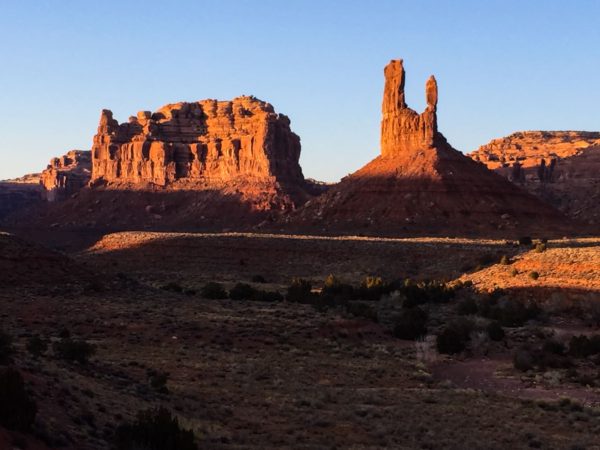
To truly appreciate the VOG’s epic solitude and to earn full points on your mission toward official desert climber certification, I recommend rope-soloing a tower in the VOG. Most of the dozen-plus towers in the VOG are two to four pitches in length and no harder than 5.10 C2, making them low-stress/high-reward solo objectives. You can pick any of the towers to solo—they are all special in their own way— but two of the most popular (if you count one to three ascents a year as “popular”) are Eagle Plume Tower and Lady In A Bathtub.
Eagle Plume is the VOG’s biggest and cleanest tower, and on its south face is Eagle Feathers, an outstanding 5.10 that is perfect for rope-solo free climbing. Another recommendation is Angel’s Fear on Lady In A Bathtub—a solo-friendly 5.9 C1 route that deposits you on a micro-summit with incredible views all the way down to Monument Valley.
Sure, there’s plenty of choss and soft stone here, but if you wanted perfect Wingate and five-star free climbing, you could’ve just stayed at Indian Creek. Embrace the junky rock as part of the overall tower experience and you’ll see why the VOG is one of the most special climbing areas in the desert.
South Face (5.11+), Texas Tower
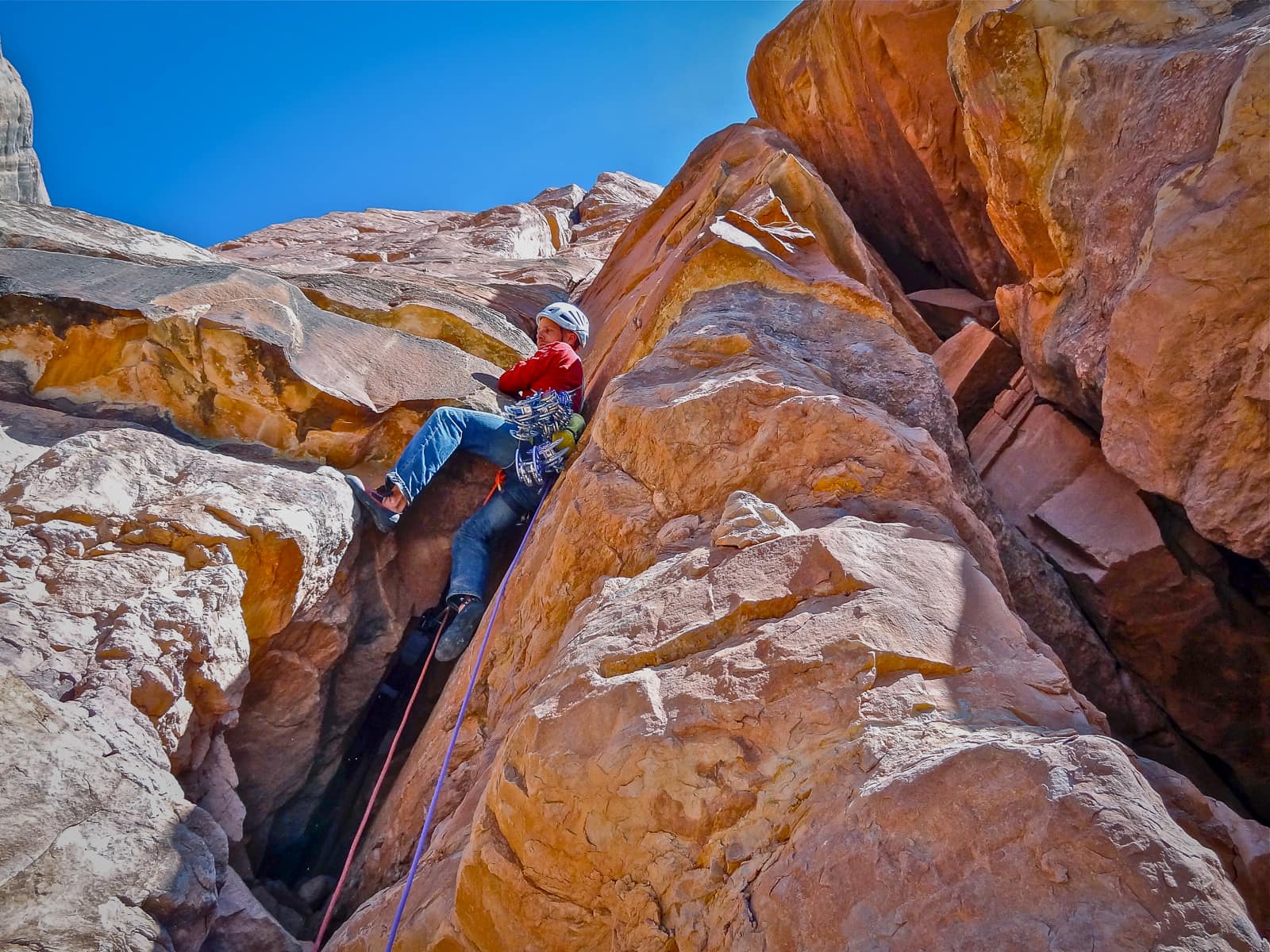
FA: Tim Toula and Kathy Zaiser; 1987. FFA: Bret Ruckman and Tim Coats.
Mountain Project link
Mess with Texas all you want … but you might to think twice about tousling with Texas Tower, a big, bad-ass tower tucked waaaaay back in Texas Canyon that sports an offwidth horror show that makes this one serious undertaking.
Just sending the 4×4 approach back into the tower is a multi-hour mission worthy of desert-climber cred. This is wilderness desert free climbing at its gnarliest! Not much can prepare you for the demanding totality of this route.
At 700-plus feet, the South Face is a major undertaking with continuous wide cracks and offwidths that dish up a dawn-to-dark adventure like no other in the desert. A single-digit fraction of desert climbers has summited Texas Tower, and a fraction of that fraction can say they’ve freed the South Face’s crux offwidth, an epic overhanging slot that demands all the big gear and mental fortitude you can carry.
Bret Ruckman apparently nabbed the first free ascent of this route with just one rock shoe, after forgetting the other one at home; he wore an approach shoe on the other foot. Gnar!
This is one of the most serious towers out there, which makes the summit one of the tastiest in all of desert-landia.


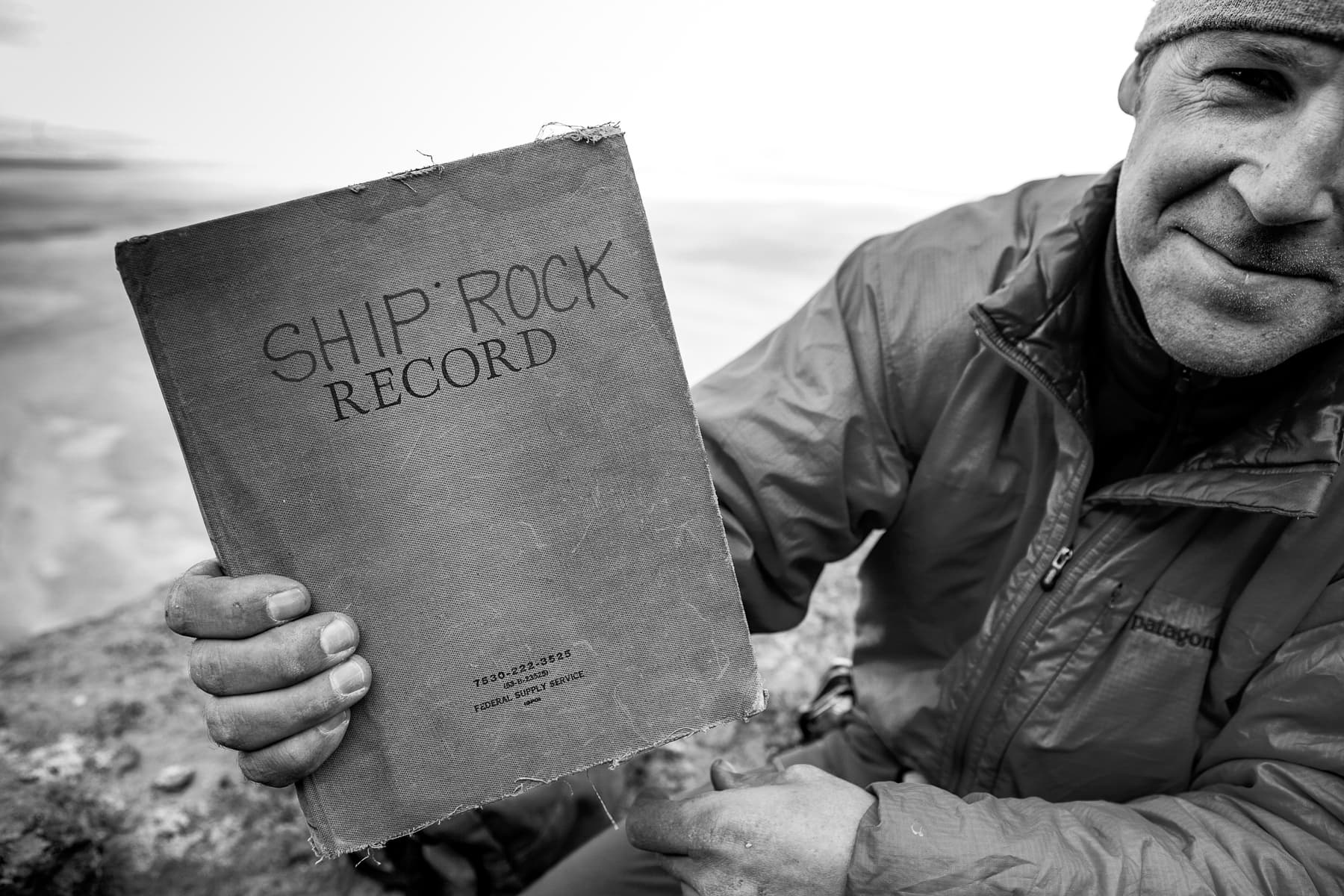

north chimney 5.8… LOOOL
probably more like 5.10